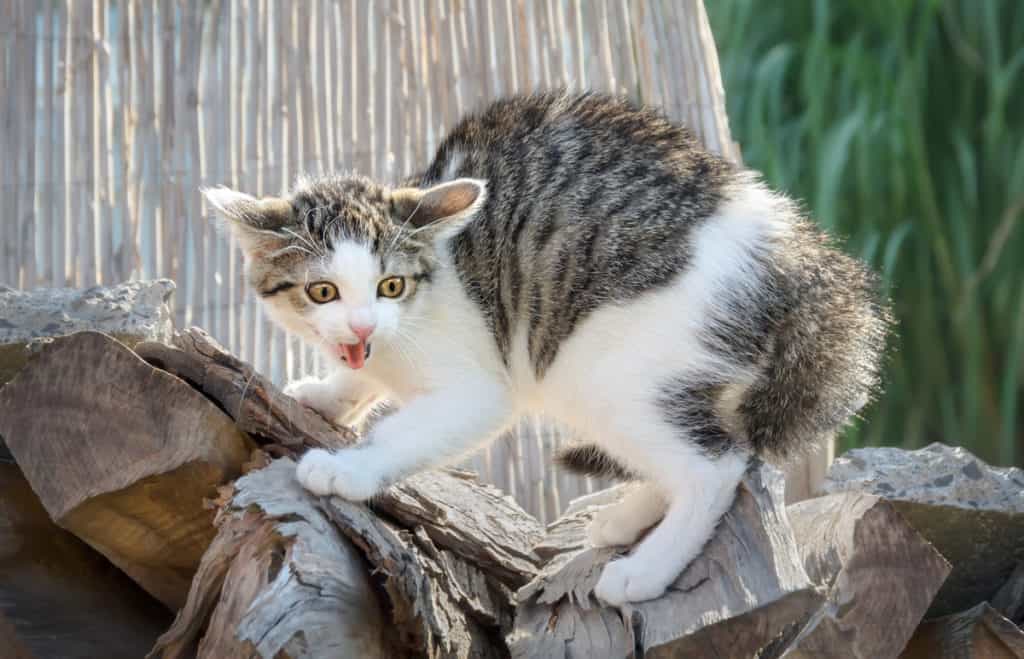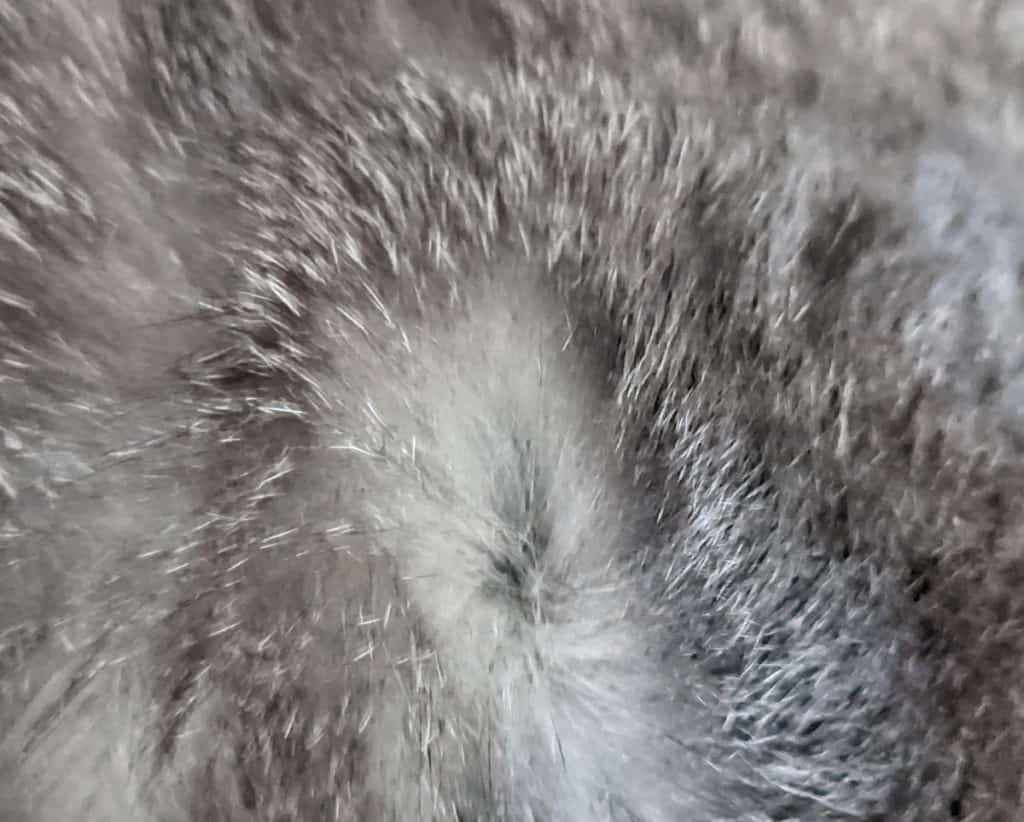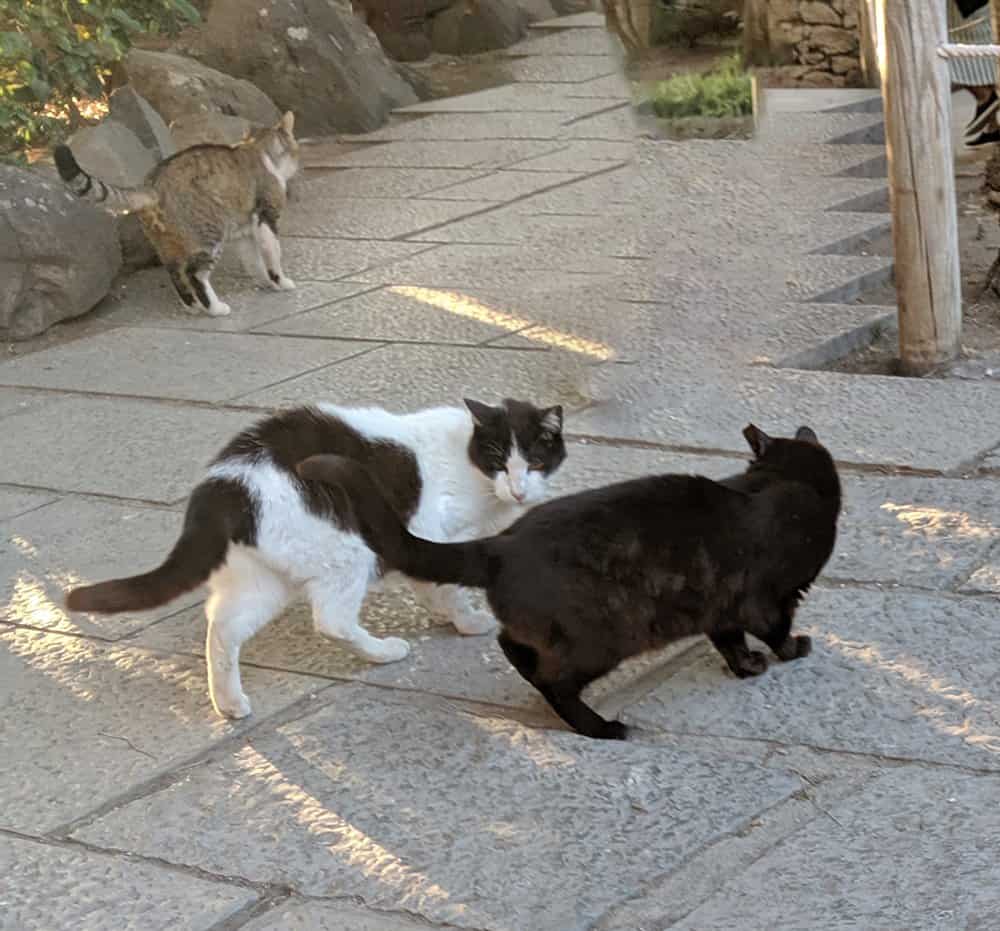Fur. Most cats have a lot of it. With the exception of hairless cat breeds like the Sphynx and nearly hairless like the Lykoi, cats either have short, medium, or long fur that covers almost all of their bodies.
Cats Spend a Lot of Time Grooming Their Fur
Cats spend a lot of time grooming. One study of eleven domestic cats found they spent about 8% of their waking time grooming. Other research suggests that cats can spend 25–30% of their time grooming.
How Much Fur Does a Cat Have?
I haven’t come across any scientific studies that quantify the amount of cat fur the average domestic cat has. A lot of websites repeat the statistic that a cat has “60,000 hairs per square inch on the cat’s back, and 120,000 hairs on the underside.” How accurate that information is is debatable.

Of course, the amount of fur a cat has, will vary depending on the cat’s breed. Cats like Maine Coons have three layers of cat fur and very long individual hairs. Hairless and nearly hairless cats have mostly one very fine and sparse layer of hair covering them.
Layers of Cat Fur
There are three possible layers of fur that a cat might have: guard hairs, awn hair, and down fur. Cats that have all three are known as having triple coats. Some cats only have two types of cat fur and some cats only have one layer of cat fur. Hairless cats, like the Sphynx, don’t have any of these layers of fur and have a fine layer of peach fuzz instead.
Guard Hairs
Guard hairs are long, coarse hairs that form the outer coat of the cat. As the name suggests, guard hairs help to keep cats dry and warm from the elements. Guard hairs are also the fur that sticks up when a cat is scared.

Awn Hair
Awn hair is found immediately underneath the guard hair on a cat. Shorter than guard hairs, awn hair helps to insulate cats and keep them warm. Most of the visible fur on a domestic cat forms the cat’s coat color.
Down Fur
The third and last layer of fur on a cat is down hair. Known as that cat’s undercoat, this soft and short layer of hair provides insulation and helps with thermoregulation for cats. Down fur is the fur closest to the layer of skin on a cat.
During the shorter days of winter months, these hair will grow longer to increase the protective layer of fur around the cat that holds in the body heat.
As the weather warms and the days grow longer, your cat will shed the extra undercoat.
Some cat breeds, especially curly-haired breeds like the Cornish Rex, only have down fur. Other breeds, like Javanese and Sphynx cats don’t have down fur.

Fur on Hairless Cats
Even hairless cats are covered in a very fine layer of hair, similar to hairs on the outside of a peach. These very fine and sparse hairs are known as Vellus hairs.
Cat’s Health and Fur
Not only does cats’ fur keep them warm and protected from the elements, the state of a cat’s coat can show how healthy a cat is. A cat that is healthy and happy will take great care to groom every day. A cat that is in ill health, malnourished, or in distress will have uneven, rough, or dirty fur.

Excessive grooming due to an infection or extreme stress in a cat can cause bald spots in the cat’s fur to develop. As always, make sure to have a vet check out your cat if you suspect any kind of illness or infection.
Thinning fur in cats between the ears and eyes
As cats age, it is normal for the fur between their ears and eyes to start thinning. This thinning is called preauricular alopecia or facial alopecia.
References
Eckstein, R. A., & Hart, B. L. (2000). The organization and control of grooming in cats. Applied Animal Behaviour Science, 68(2), 131-140. https://doi.org/10.1016/S0168-1591(00)00094-0
Hunter, T. (n.d.). Coat and skin appearance in the healthy cat. vca_corporate. https://vcahospitals.com/know-your-pet/coat-and-skin-appearance-in-the-healthy-cat
Kim, H. S., Hong, J. S., Park, C. W., Cho, K. H., & Kim, Y. Y. (2019). Evaluation of grooming behaviour and apparent digestibility method in cats. Journal of feline medicine and surgery, 21(4), 373-378. https://doi.org/10.1177/1098612X18783837
Your cat’s winter coat. (2021, February 5). Catonsville Cat Clinic. https://www.catonsvillecatclinic.com/holmes-corner/your-cats-winter-coat/






